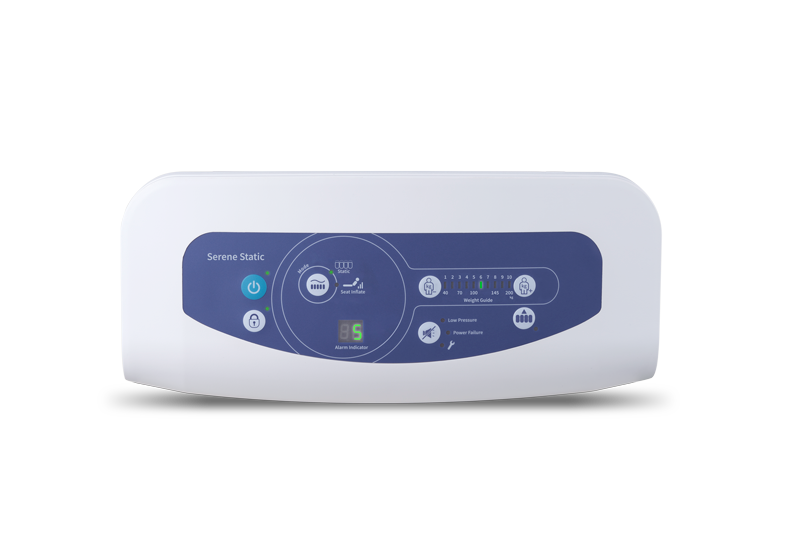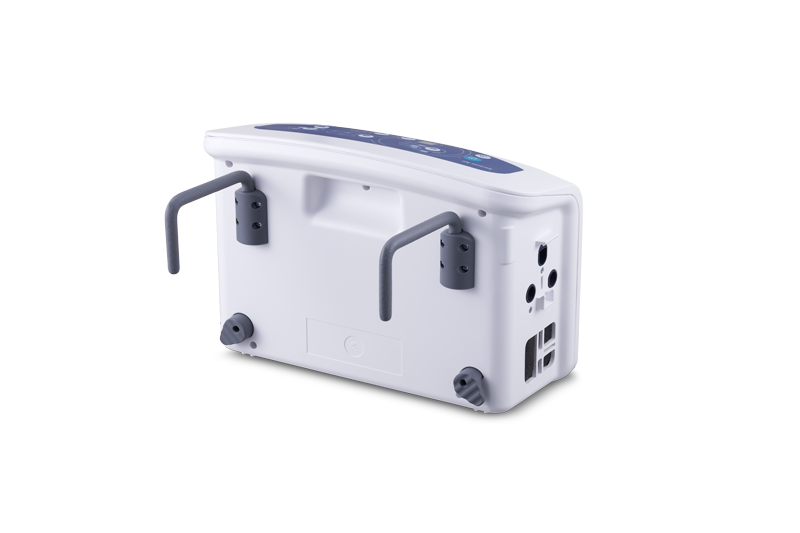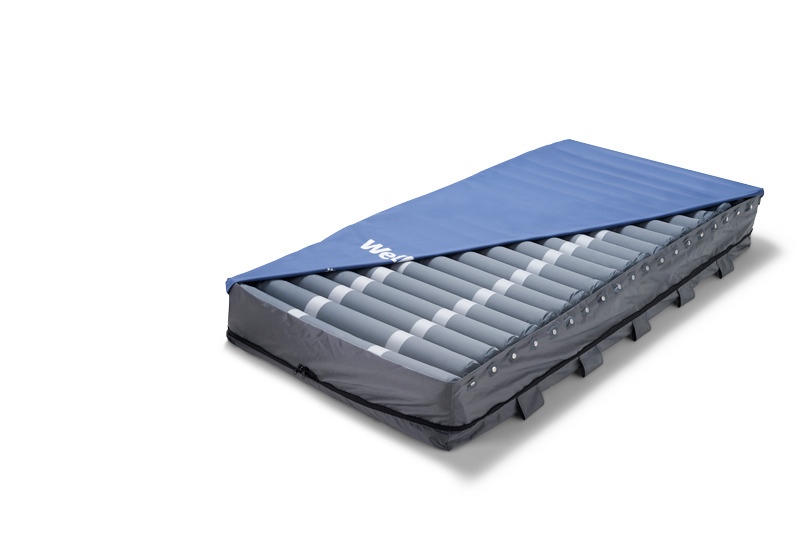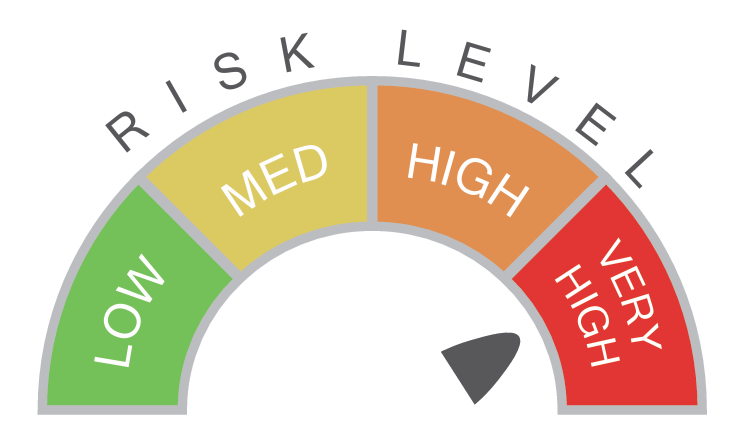Serene
For High to Very High Risk
Contact Us For More Info
Reducing pressure injuries for long-term care — Improving skin integrity, tissue viability, and blood circulation with alternating pressure.
On average, 65 per 1000 adult inpatients develop pressure injuries (also known as pressure ulcers) due to improper inpatient pressure injury prevention measures and require 18 in-hospital days. That's 2.5 times that of an average acute inpatient. Financially, treating pressure injuries increases healthcare cost by USD 15,700 to USD 17,700. Since 87% are elderly patients, an ageing population and COVID-19 pandemic accelerates pressure injury prevalence and exhaust global healthcare and capital resources.1
Serene provides caregivers with more control over personalised care delivery such as air mattress firmness and therapy mode, an intuitive and user-friendly air pump user interface that is suitable for all levels of caregivers, and a backup power system for maintaining pressure distribution up to 6 hours. Preventing pressure injuries improves patient outcomes and patient care experience.

Prepared for intensive care
- Proprietary and automatic pressure sensing technology optimises mattress pressure settings based on patients' weight distribution for more effective pressure relief.
- Cell encapsulated in cell (cell-in-cell) in the sacrum area improves structural support for safe and comfortable seating position and in-bed movements.
- Optional built-in battery ensures non-stop alternating pressure relief up to 6 hours during transport in case of power failures.
- Intuitive user interface on display simplifies controls, indicators, settings, and power functionalities for all levels of caregivers to operate with ease.
- A whisper-quite pump design helps patients recover in a stress-free environment without excessive noise.
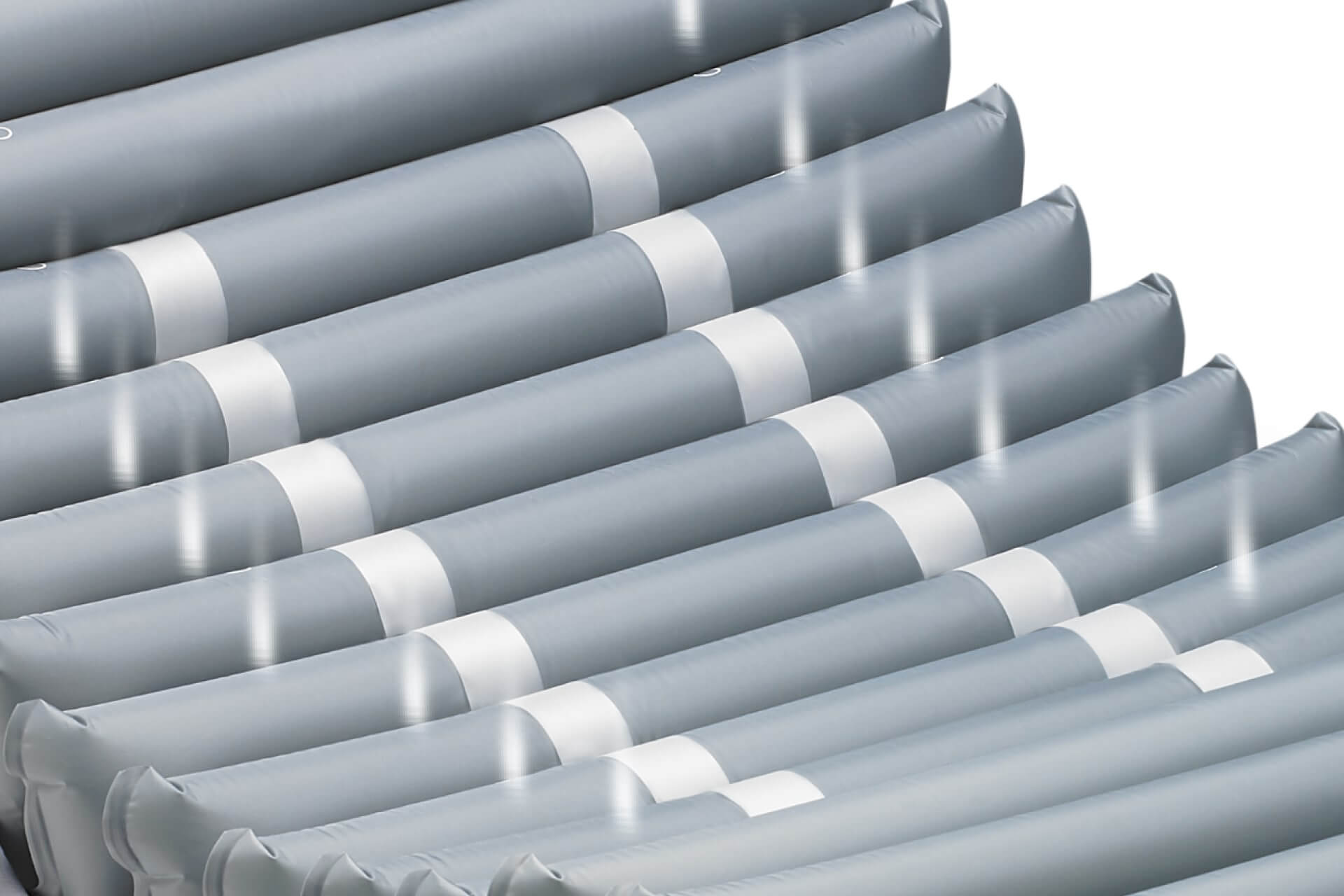
Air cell's ventilated low air loss wicks moisture away, keeping the patient comfortable.
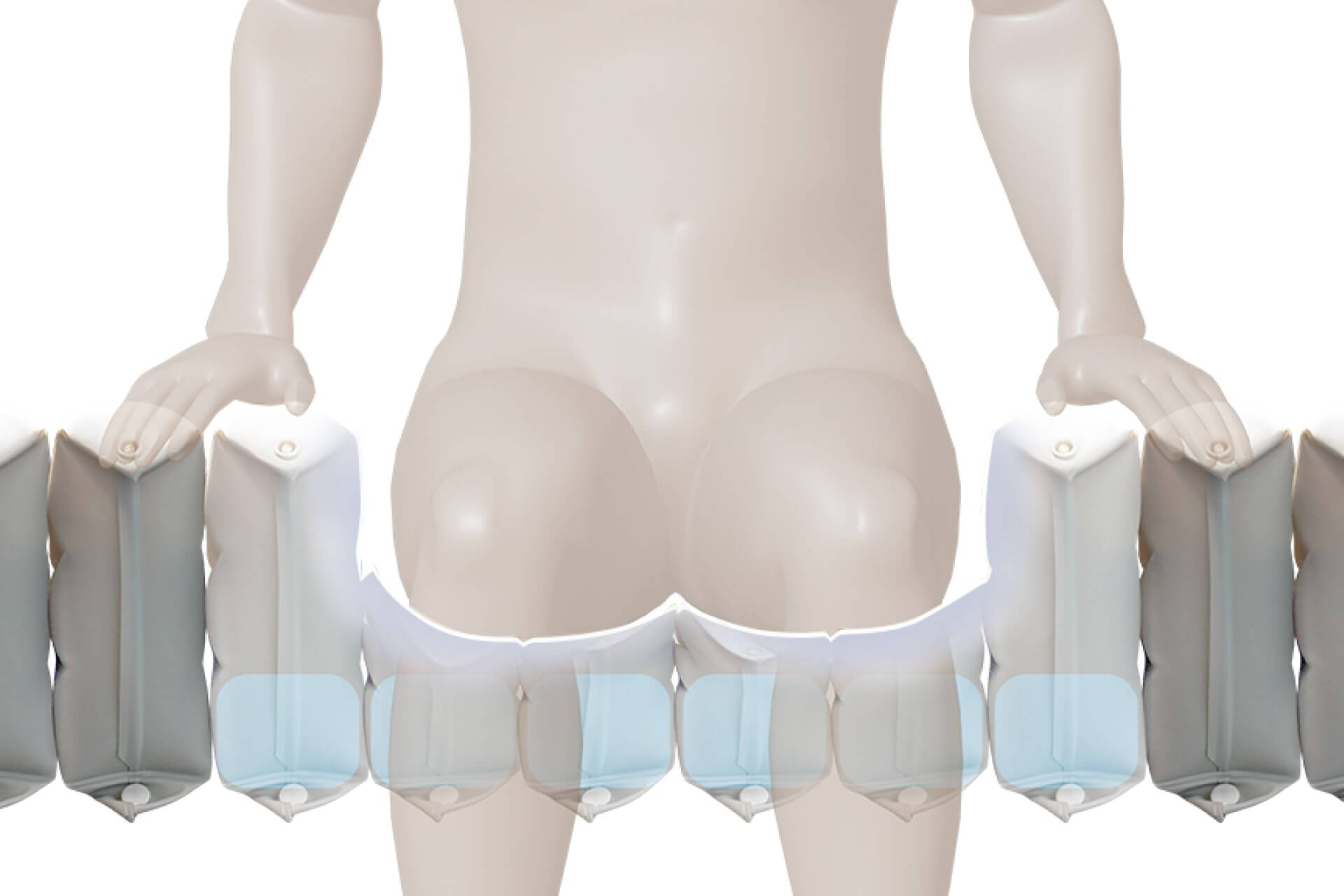
Cell-on-cell bladder supports the patient's weight during sitting, avoiding bottoming out in case of power failure.
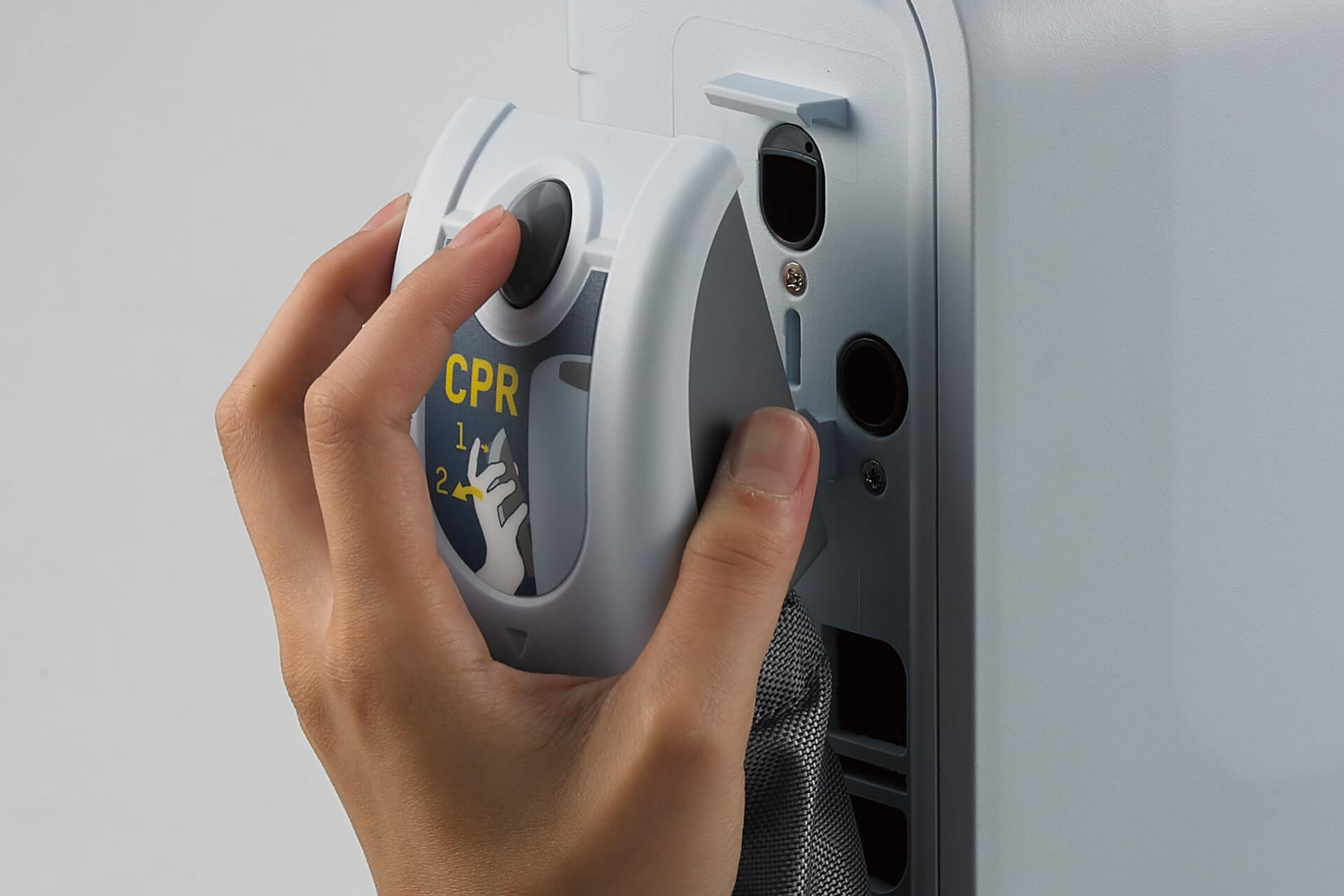
Capping the pump's quick connector switches the mattress into static air pressure, ready for transportation.
| Pump | |
|---|---|
| Dimension | 31.2 x 26 x 16 cm |
| Weight | 5 kg |
| Case Material | Flame retardant ABS |
|
Supply Voltage |
AC 230V, 50Hz |
| Mattress | |
|---|---|
| Type | 8" overlay +2" foam pocket (foam is not included) |
| Dimension | 200 x 90 x 20.3 cm |
Cell Height |
20 x 8" |
|
Weight |
7.5 kg |
| Cover Material | Sliver + 4-Way Stretch |
| Cell Material | Nylon / PU |
| Maximum Patient Weight | 200 kg |

Prepared for intensive care
- Proprietary and automatic pressure sensing technology optimises mattress pressure settings based on patients' weight distribution for more effective pressure relief.
- Cell encapsulated in cell (cell-in-cell) in the sacrum area improves structural support for safe and comfortable seating position and in-bed movements.
- Optional built-in battery ensures non-stop alternating pressure relief up to 6 hours during transport in case of power failures.
- Intuitive user interface on display simplifies controls, indicators, settings, and power functionalities for all levels of caregivers to operate with ease.
- A whisper-quite pump design helps patients recover in a stress-free environment without excessive noise.

Air cell's ventilated low air loss wicks moisture away, keeping the patient comfortable.

Cell-on-cell bladder supports the patient's weight during sitting, avoiding bottoming out in case of power failure.

Capping the pump's quick connector switches the mattress into static air pressure, ready for transportation.
All air cells are made from Thermoplastic Polyurethanes (TPU). It is highly resistant to breaking down when in contact with water (hydrolysis), soft to touch, and minimises friction and noise during patient movements.
Cell-in-cell design refers to encapsulating a firm air cell within a larger outer cell, doubling the effect of firmness and stability for patients. Wellell’s Serene uses air cells with the cell-in-cell design in the sacrum area to improve patient support and comfort during sitting positions and when patients leave and enter the bed.
Reference
- Lo, Zhiwen J et al. “Clinical and economic burden of wound care in the tropics: a 5-year institutional population health review.” International wound journal vol. 17,3 (2020): 790-803. doi:10.1111/iwj.13333

